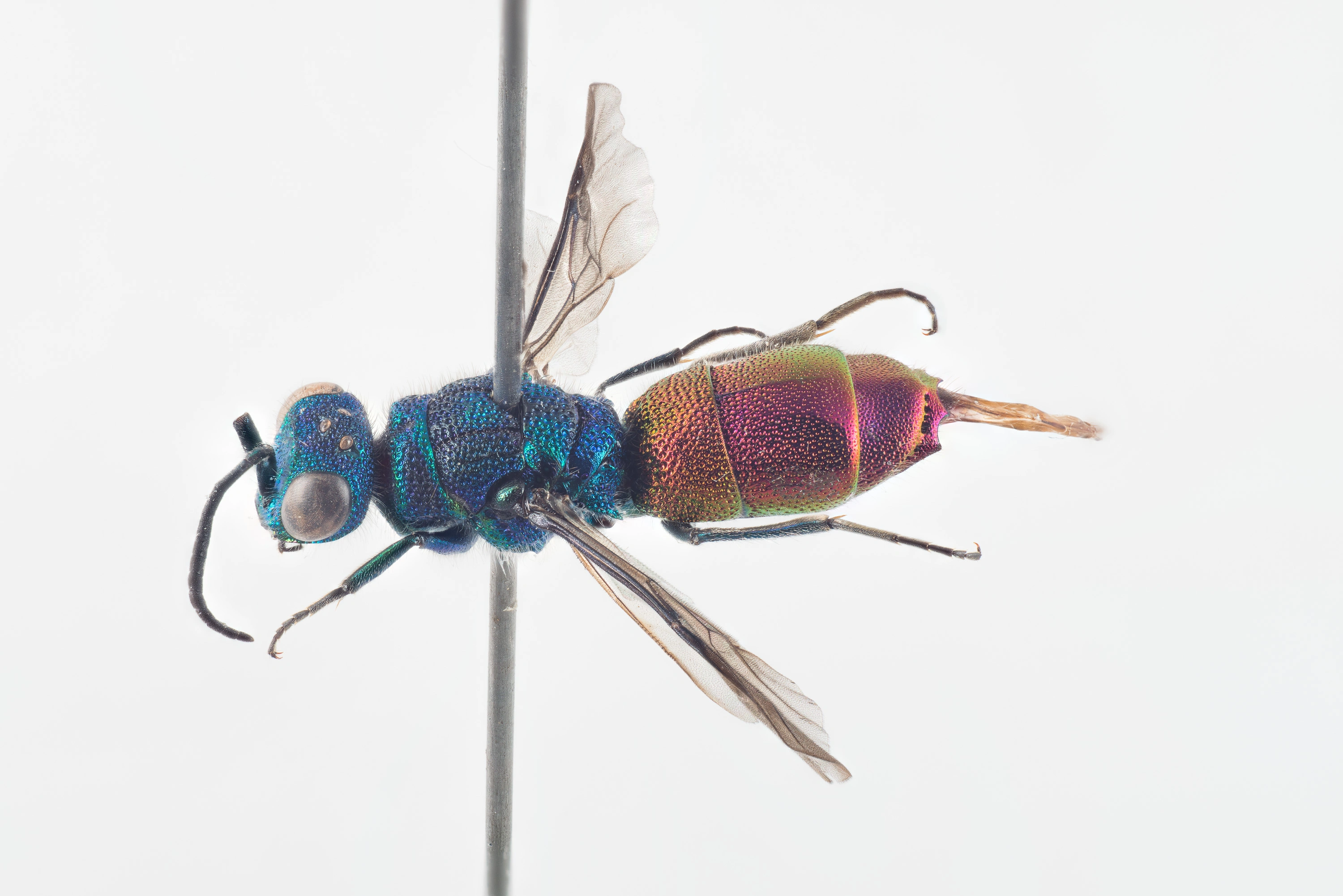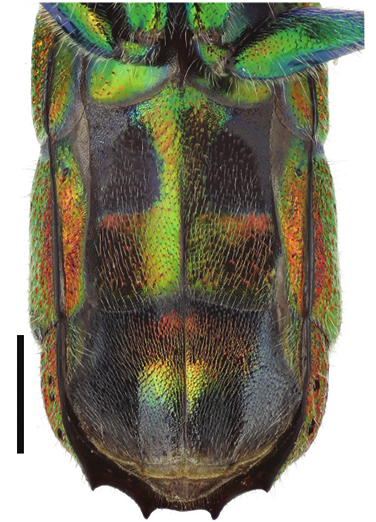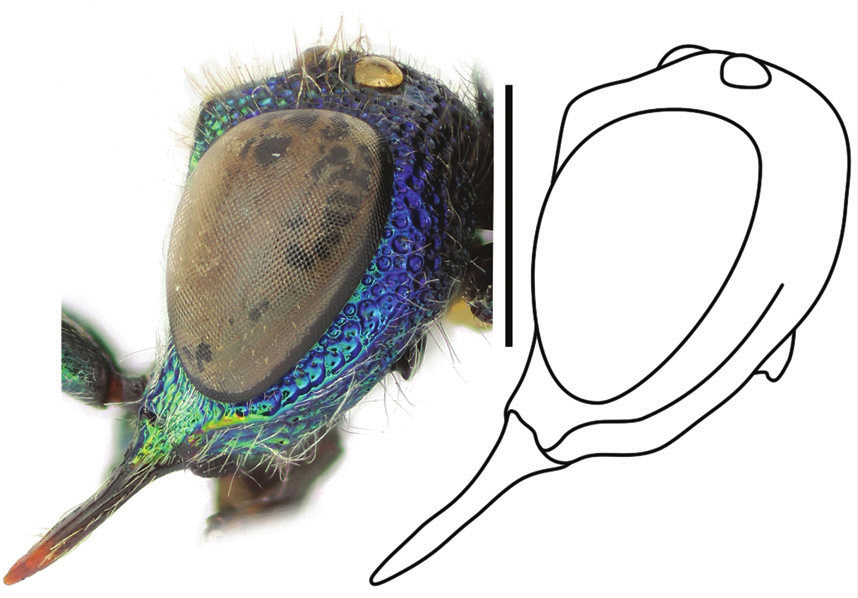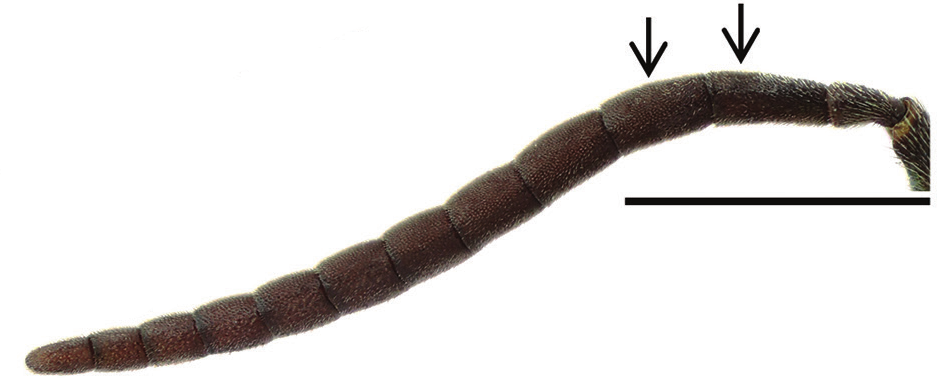Chrysis schencki
A common species in forest margins and clearings with sun-exposed dead wood. The hosts include the Eumeninae Ancistrocerus trifasciatus. Chrysis schencki is difficult to separate from closely related species and the best character seems to be the thin mandibles of the females. Otherwise the puncture of T2 is finer and denser than in Chrysis impressa.
- Innhold
- Diagnosis
- Distribution
- Biology
- Remarks
Diagnosis
Figure 131
Metasoma, ventral view: C. schencki ♂. Scale 1 mm.
Figure 143
Head, lateral view: C. schencki ♀. Scale 1 mm.
Figure 148
Head, lateral view: C. schencki ♂. Scale 1 mm.
Figure 176
Antenna (arrow indicating F1 or F1 and F2): C. schencki ♂. Scale 1 mm.
Length 6–10 mm.
The head and mesosoma are dorsally dark blue, violet or nearly black, and the punctures of the mesoscutum are usually of the same colour as the interstices. The tergites are golden red and the sternites variably golden or greenish (Fig. 131). The punctation of T3 is often characteristically dense and homogeneous. The body shape is more elongate than in C. ignita, C. impressa and C. borealis sp. n., but not as slender as in C. angustula and C. leptomandibularis. Females are usually best distinguished from other species of the C. ignita group by their thin and basally concave mandible (Fig. 143), though males are more difficult to identify. Compared to C. impressa and C. borealis sp. n., the mandible of male is slightly thinner and basally more concave (Fig. 148), the body is more slender, and the relative length of F1 to F2 is somewhat smaller (Fig. 176). Identification of the males is not always possible with certainty by morphological characters alone.
Distribution
Estonia, Finland, Latvia, Lithuania, Norway, Sweden. Common.
Trans-Palearctic: from western Europe to central Asia, Siberia and Japan (Linsenmaier 1997).
Be aware that the records present in the GBIF map may be misleading for some countries due to unrevised data sets or missing information.
GBIF Taxon: Chrysis schencki Linsenmeier, 1968Biology
Habitat: forest margins, clearings and gardens with sun-exposed dead wood. Adults fly near sun-exposed dead tree trunks (e.g. Betula, Populus, Quercus), and near walls of wooden buildings (e.g. log barns, sheds), poles and log piles.
Flight period: late May to September.
Host: Ancistrocerus trifasciatus (Müller) (Vespidae) (Pärn et al. 2014, our own obs.). Possibly also A. gazella (Panzer) and A. nigricornis (Curtis) (Schneider 1991).
Remarks
Recent mitochondrial DNA studies have shown that C. schencki consists of two distinct and sympatric genetic lineages in northern Europe (Soon et al. 2014). It is possible that they represent two different species, but more morphological and molecular studies are needed.




